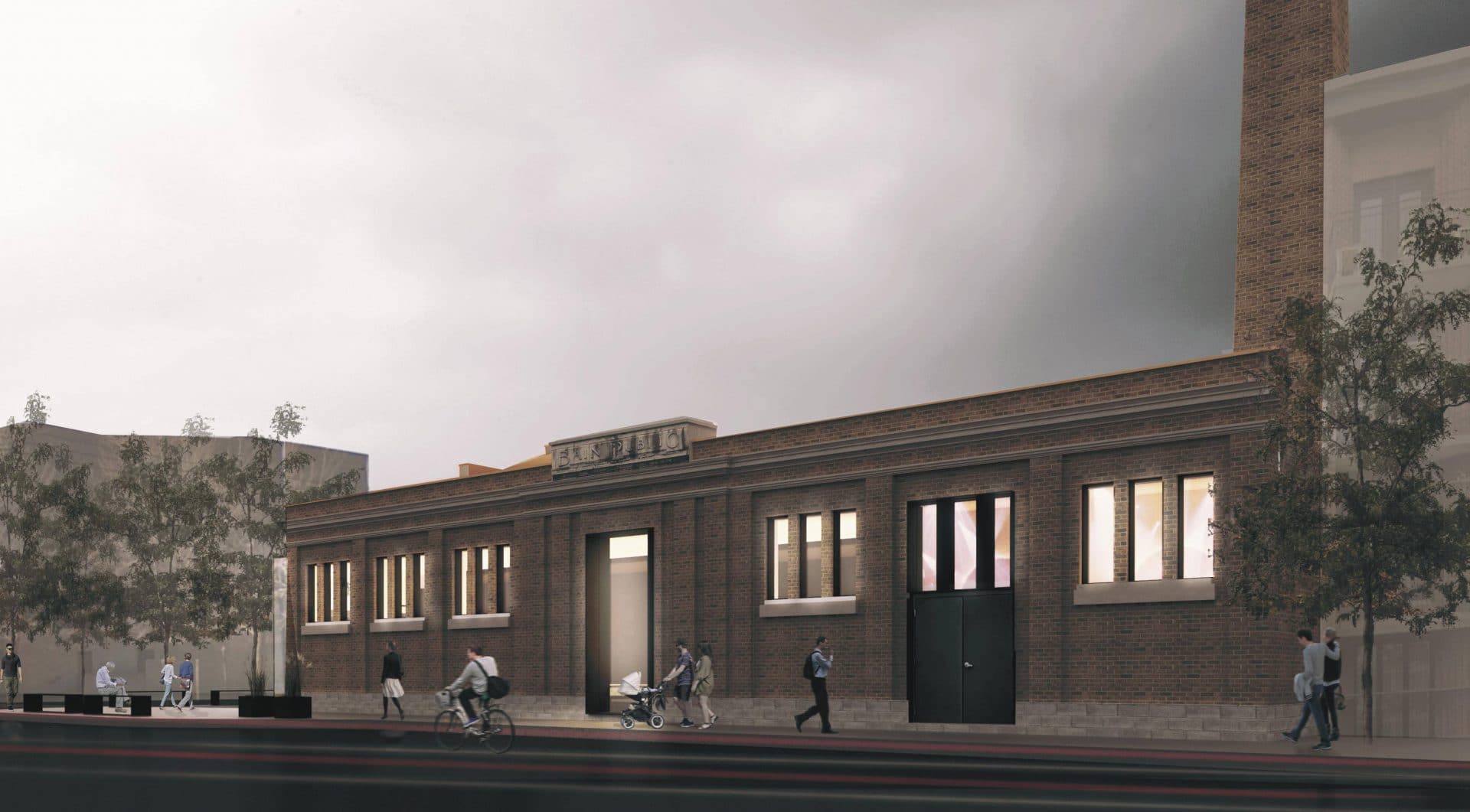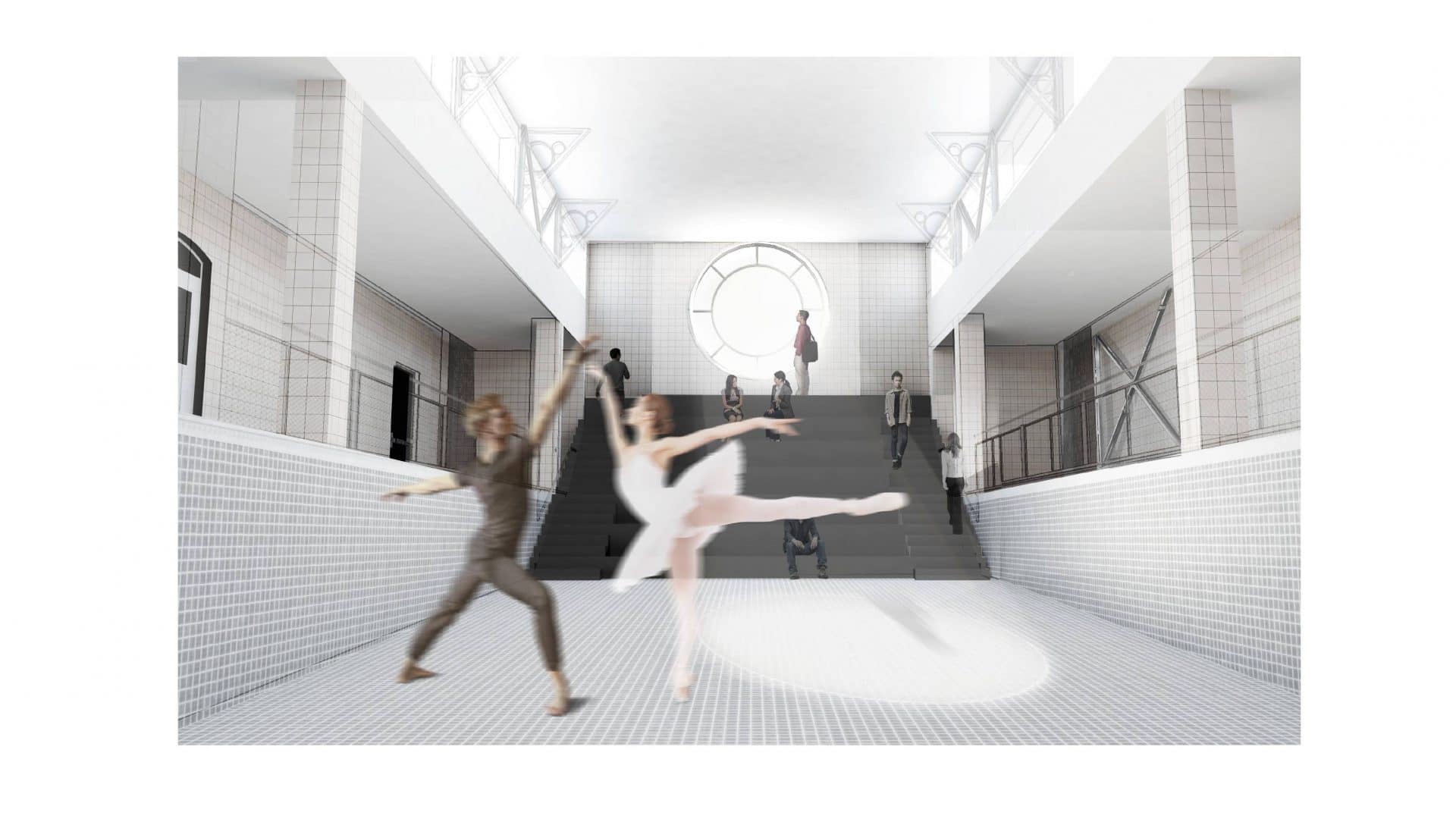Heritage architecture takes centre stage
Tucked into Montreal’s Mile End neighbourhood of the Plateau-Mont-Royal borough, the Bain Saint-Michel bathhouse is a snapshot of a bygone era. Tasked with turning the page of this famous building’s history towards a renewed status as a performance space and artistic hub, designers carried out a transformation that honoured this landmark’s heritage and character, preparing the space for its new vocation while introducing new elements with delicacy and preservation.
Becoming a place of entertainment and cultural diffusion required repositioning the main entrance onto the southern façade, a move that was achieved without impacting the architectural integrity of the structure and maintaining the tranquility of surrounding residential streets.
Outside, the bathhouse’s original grand oeil-de-boeuf window and its original grid of windows on Saint-Dominique Street were restored – reaffirming the symmetrical character of this building’s elegant Beaux-Arts style and bathing the space in natural light – while a cultural presentation showcase was integrated in the former entrance’s enclosure.
Inside, prominent interventions share space with traces of the past: As visitors enter the building, their gaze will be drawn to a longitudinal volume of black polished glass, an area which hosts all the building’s secondary functions (elevator, WC, check room). This frees up space for the creation of a foyer area to serve the main performance hall where an old pool was once located. This new venue acts as a flexible gathering and presentation space, marked by simple interventions that reveal the richness of the existing architecture. In the basement, a double-height space that was formerly the site of the boiler room now houses a secondary performance and exhibition area.
Together, each of these details of new Bain Saint-Michel invokes a subtle dialogue between the old and the new, between new capabilities and past purpose. Against a backdrop of heritage, the next chapter of this landmark’s second life will be written by the artists and performers taking to its stages.


